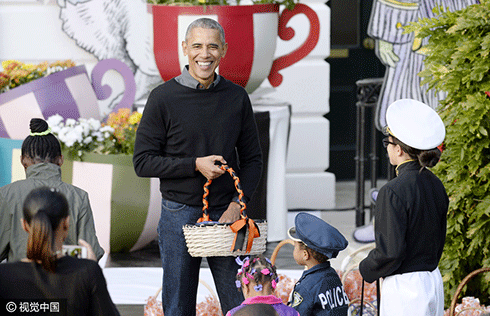Two billion children breathe bad air: UNICEF report
Updated: 2016-11-01 19:22
By Zhang Yuchen(chinadaily.com.cn)
|
||||||||
Almost one in seven of the world's children live in hazardous areas with the most toxic levels of outdoor air pollution, according to a UN report released on Monday.
Around 300 million children across the world have been detected in satellite imagery to be exposed to the severest outdoor pollution– six or more times higher than international guidelines suggested by World Health Organization.
The satellite imagery also confirms around two billion children live in areas where outdoor air pollution, caused by factors such as vehicle emissions, heavy use of fossil fuels, dust and burning of waste, exceeds minimum air quality guidelines set by the WHO.
South Asia has the largest number of children living in these areas, at 620 million, with Africa following at 520 million children. The East Asia and Pacific region has 450 million children living in areas that exceed guideline limits.
Outdoor and indoor air pollution are directly linked to pneumonia and other respiratory diseases that account for almost one in 10 under-five deaths, making air pollution one of the leading dangers to children's health.
The Chinese environmental protection authority released a study last month showing nearly one-third of children have been threatened by potential hazards from indoor air pollution.
According to its findings, 26.8 percent of children are exposed to indoor air pollution attributable to solid fuels used for cooking or heating, 12.7 percent have no properly treated drinking water, 13.6 percent live in places where there are petroleum, petrochemical, coking and other highly polluting enterprises within a radius of one kilometer, and 14.6 percent live in places where there are major highways within 50 meters.
UNICEF China is collaborating with a government counterpart to study the effects of environmental health on children and will support the development of a Child Environmental Health Action Plan as part of the National Environmental Health Action Plan.
"More needs to be done to protect children from the effects of air pollution, not only by governments, but by all of us. While reducing outdoor air pollution is the longer term goal, immediate steps can be taken to reduce indoor air pollution. Switching to clean fuels, ensuring good ventilation, building energy efficient homes and schools, and stopping all cigarette smoking indoors are examples," said Rana Flowers, UNICEF Representative to China.
- Regular China-South Asia freight train launched
- Police swoop on Paris migrant camp after Calais Jungle clearout
- Regular China-South Asia freight train launched
- South Korean prosecutors arrest woman at centre of political crisis: media
- EU, Canada sign landmark deals to enhance economic, political partnership
- Wife raises funds to search for missing sailor

 Obamas host White House Halloween for children
Obamas host White House Halloween for children
 China Fashion Week: Liu Yong Exclusive
China Fashion Week: Liu Yong Exclusive
 Top 5 collaborating countries in Belt and Road Initiatives
Top 5 collaborating countries in Belt and Road Initiatives
 Hand-carved buckets face possible extinction in Zhejiang
Hand-carved buckets face possible extinction in Zhejiang
 Jet fighters and bombers ready for Air Show China
Jet fighters and bombers ready for Air Show China
 The World in photos: from Oct 24 to Oct 30
The World in photos: from Oct 24 to Oct 30
 Through the lens: The life of a kung fu master
Through the lens: The life of a kung fu master
 In pics: Top 10 Chinese cities in 2016
In pics: Top 10 Chinese cities in 2016
Most Viewed
Editor's Picks

|

|

|

|

|

|
Today's Top News
US election rhetoric unlikely to foreshadow future US-China relations
'Zero Hunger Run' held in Rome
Trump outlines anti-terror plan, proposing extreme vetting for immigrants
Phelps puts spotlight on cupping
US launches airstrikes against IS targets in Libya's Sirte
Ministry slams US-Korean THAAD deployment
Two police officers shot at protest in Dallas
Abe's blame game reveals his policies failing to get results
US Weekly

|

|







